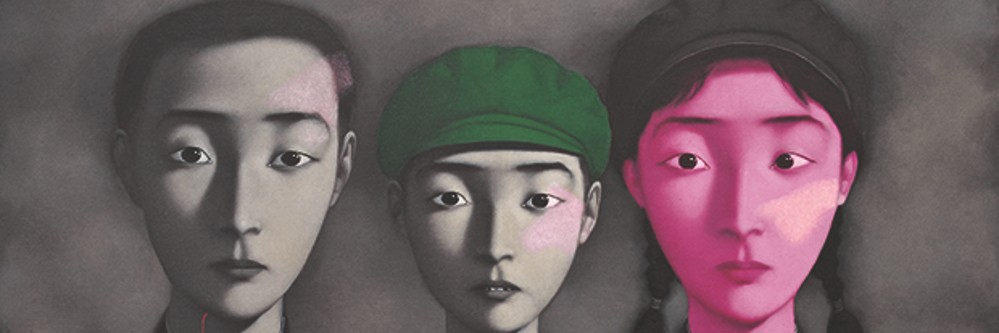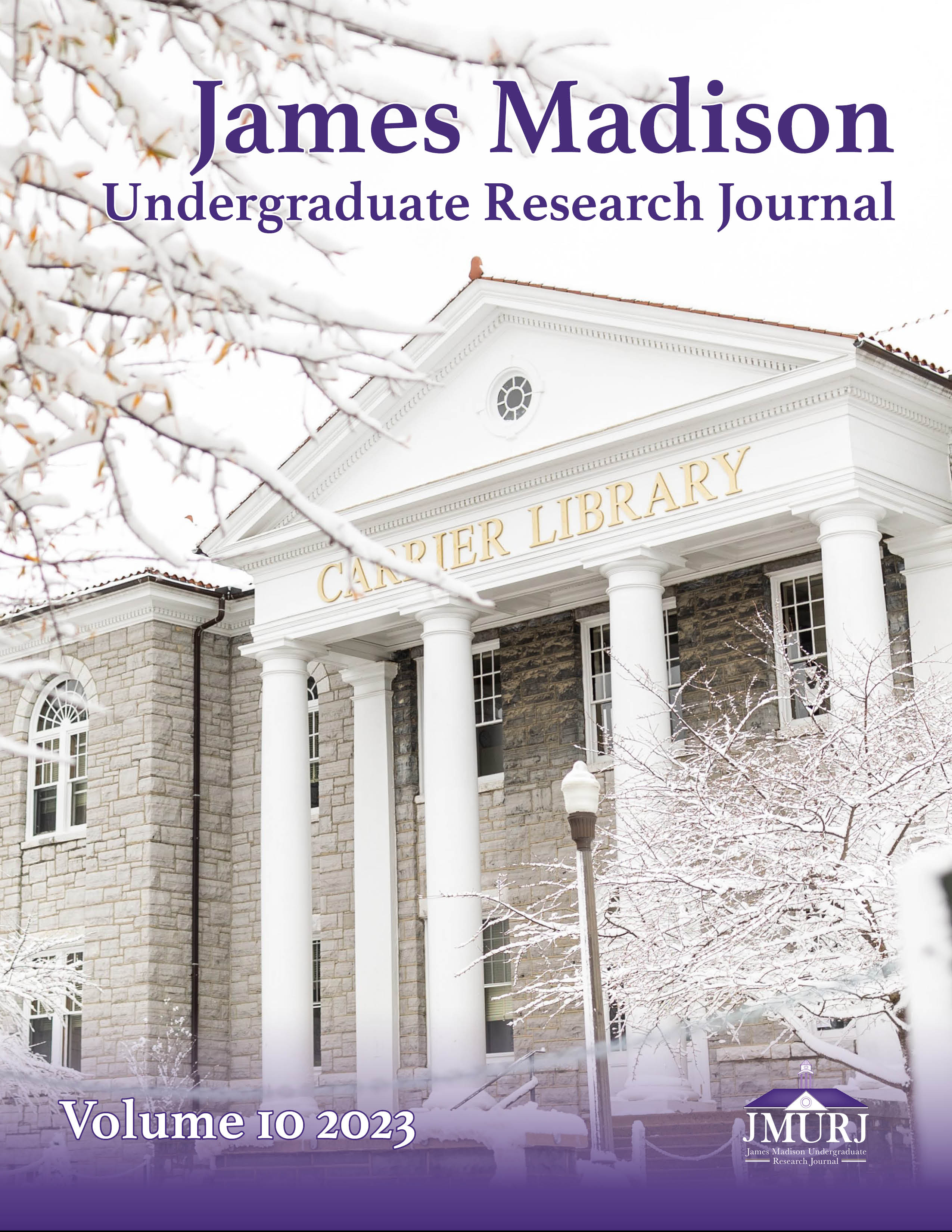Polished Memories: Zhang Xiaogang's Bloodline: Big Family No. 3 and the Ideal Family of the Cultural Revolution
Abby Wiggins
Art History
Zhang Xiaogang’s series of paintings, Bloodline, is a strange, surreal, and haunting collection of family portraits. As a Chinese artist who was young during the Cultural Revolution of the 60s and 70s, Zhang has a complicated relationship with his own national history. The paintings of Bloodline are not photorealistic portraits; rather, they are constructions coming from within his mind as he returns to his memories and feelings decades later. This essay examines Big Family No. 3, a painting for the series done in 1995, exploring the influences and processes that contributed to its creation. It argues that this work in particular reflects on the Cultural Revolution, the artist relying on his own memories and retrospection to create a picture of an idealized family.
Intercorrelations Between Essentialist Beliefs and Religious, Political, and National Identities
Truman Deree
Psychology
Research on essentialist beliefs has largely focused on a few identities associated with biological traits that have socially constructed significance and meanings placed on them. Identities that are more choice-based or otherwise non-physical have been underrepresented in research on essentialism. The concept of essentialism is important because the action of regarding natural biological factors as immutable and determinant has been found to lead to racial and political discrimination. The current study surveyed participants on their national, religious, and political beliefs to investigate the relationships between social identities and attitudes about essentialism. The results of the study demonstrated that national, political, and religious essentialist beliefs and centralities positively correlate with each other, broadening the general understanding of these identities.
Strategies to Aid Multicultural Learners in Academic Language Acquisition in Elementary Science and Mathematics Classes
Mikayla Grumbacher and Sophia Sladic
Educational Foundations and Exceptionalities (TESOL)
This qualitative inquiry research study surveys academic language acquisition strategies for teachers of multilingual learners in elementary science and mathematics classes. We paired readings of recent peer reviewed journal articles with video observations of three elementary school teachers and an interview with a Director of English as a Second Language for a county in Virginia. Thematic analysis helped us identify similar strategies across the different studies, classroom observations, and interview. Our findings suggest that utilizing sensory and interactive supports are especially helpful strategies for teachers seeking to help multilingual learners in academic language acquisition.
Culturally Responsive Strategies to Support Multilingual Learners
Liz Shanks and Mackenzie Weakland
Educational Foundations and Exceptionalities (TESOL)
Teachers must develop pedagogical practices to meet the needs of the growing number of multilingual learners in K-12 classrooms. Our inquiry-based research study analyzed ways that teachers can implement pedagogical strategies that are culturally responsive to multilingual learners. Thematic analysis of recent academic studies, class observations, and an interview with a language specialist affirm a set of culturally responsive instructional practices in the classroom that lead to the academic success of multilingual learners. These practices included teacher attitudes, translanguaging, and thinking routines to assist in English language acquisition. K-12 teachers, administrators, and community leaders working with multilingual learners can build on these findings.
Improvement to ISRU for Rocket Fuel Generation
Justin Sharp
Chemistry
The development of efficient in situ resource utilization (ISRU) technologies is crucial for the establishment of an extraterrestrial, self-sustaining colony. The generation of rocket fuel at potential colony locations is necessary to provide the transportation of people and cargo to and from these locations.Three processes are discussed for the improvement of ISRU methods to generate rocket fuel: electrolysis and electrochemical improvements to the process of crude fuel production, physical and chemical methods for separation of gaseous H2 and O2, and materials and cryogenics engineering for storage and transportation of liquid hydrogen (LH2) and liquid oxygen (LOX). Storage and transportation of cryogenics like LOX and LH2 is a highly researched field due to its applications in making clean and renewable energy widely available, and similar methods can be applied for the acquisition of rocket fuel. Storage methods such as the self-evaporating vapor cooled shield (VCS) or thermoacoustic refrigerator shield (TRS) have been shown to decrease the loss of evaporated cryogenics. Additional methods such as solid-state material engineering with materials such as cesium superoxide (CeO2) have also shown potential for long-term storage of LH2 and LOX.
Milton's "Lycidas": Elevating the Human Condition
Haylee Edwards
English
John Milton’s 1637 poem “Lycidas” is a pastoral elegy told from the point of view of a shepherd grieving the loss of his friend, Lycidas. Written in honor of Milton’s late classmate, Edward King, “Lycidas” is a Christian allegory. This essay situates “Lycidas” within the history and characteristics of the pastoral elegy before analyzing how the poem at once inhabits and progressively deviates from the traditional form. Milton combines the traditional pastoral form with Elizabethan ideals and imagery to affirm his own religious, political, and existential views about death and the afterlife. The poem becomes increasingly complex, increasingly modern, and increasingly focused on the present.
A Comparative Analysis of Henry Fuseli's Nibelungen Series and Drawings of Courtesans
Kathryn Long
Art History
In a series of drawings completed in 1805, artist Henry Fuseli illustrated Kriemhild, the female protagonist of the medieval German epic The Niebelungenlied. Around the same time period, Fuseli was also creating highly sexualized illustrations of courtesans. While other scholars have proposed that Fuseli’s sketches of courtesans show that he held a positive view of women, this essay compares his images of Kriemhild and courtesans to suggest that Fuseli saw Kriemhild a symbol of righteous fury, loyalty and justice, and as a moral opposite to contemporary sex workers. Fuseli’s idealization of Kriemhild combined with his posthumously published lectures reveal his negative perception of 19th-century women, offering an alternative interpretation of Fuseli’s artistic intent.









